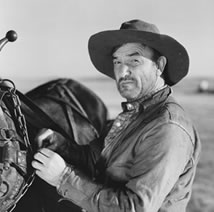GAUCHOS, COMPADRES AND COMPADRITOS… they are the heart of Argentine culture and are very often depicted in tango songs. But… who are they?

|
Gauchos were Argentina’s “cow boys”. They led a nomadic lifestyle and lived by rustling cattle. Many enlisted in Argentina’s war of independence. Whilst this gave survivors a better position in society, many actually ended up dying on the front lines. |
Around 1880, the Argentine government distributed much of the countryside to aristocratic owners and European immigrants. As a result, many gauchos were forced to move into the poorest suburbs of Buenos Aires. These gauchos eventually became to be known as compadres. These compadres had roots in the rural areas, and were often employed in the slaughter houses that proliferated around there.
Compadritos were very similar to compadres, but were of city background rather than rural – many of these resided in the arrabales, which were the outmost slums of Buenos Aires. Both compadres and compadritos were the men who hung out on the streets of Buenos Aires – reputed to be macho but likeable scoundrels, often carrying knifes, avoiding work, and living for women and tango.
Simon Collier, the notable tango historian, vividly described gauchos, compadres and compadritos in The Popular Roots of Argentine Tango as follows:
The free nomadic gaucho world had more or less vanished by the 1880s, yet the suburban compadre did perhaps inherit certain gaucho values: pride, independence, ostentatious masculinity, a propensity to settle matters of honour with knives.
More numerous than the compadres were the young men of poor background who sought to imitate them and who were known as compadritos, street toughs well depicted in the literature of the time: slouch hat, loosely-knotted silk neckerchief, knife discreetly tucked into belt, high-heeled boots.
The tango was thus populated by compadres and compadritos at a time when the gauchos heroes were important in popular culture and literature. Gauchos and compadritos, in a kind of unusual blending, become, during this period, related to the ideology and objectives of the traditionalist movement.
Abrazo,
Nati & Bruno
Source:
- http://www.salsavancouver.com/tango/symposium/history2.htm
- http://www.verytango.com/tango-history.html
- http://www.verytangostore.com/tango-history.html
- http://es.wikipedia.org/wiki/Compadrito
- Image: http://javierbarreiro.files.wordpress.com/2011/08/belda-el-compadrito005.jpg










